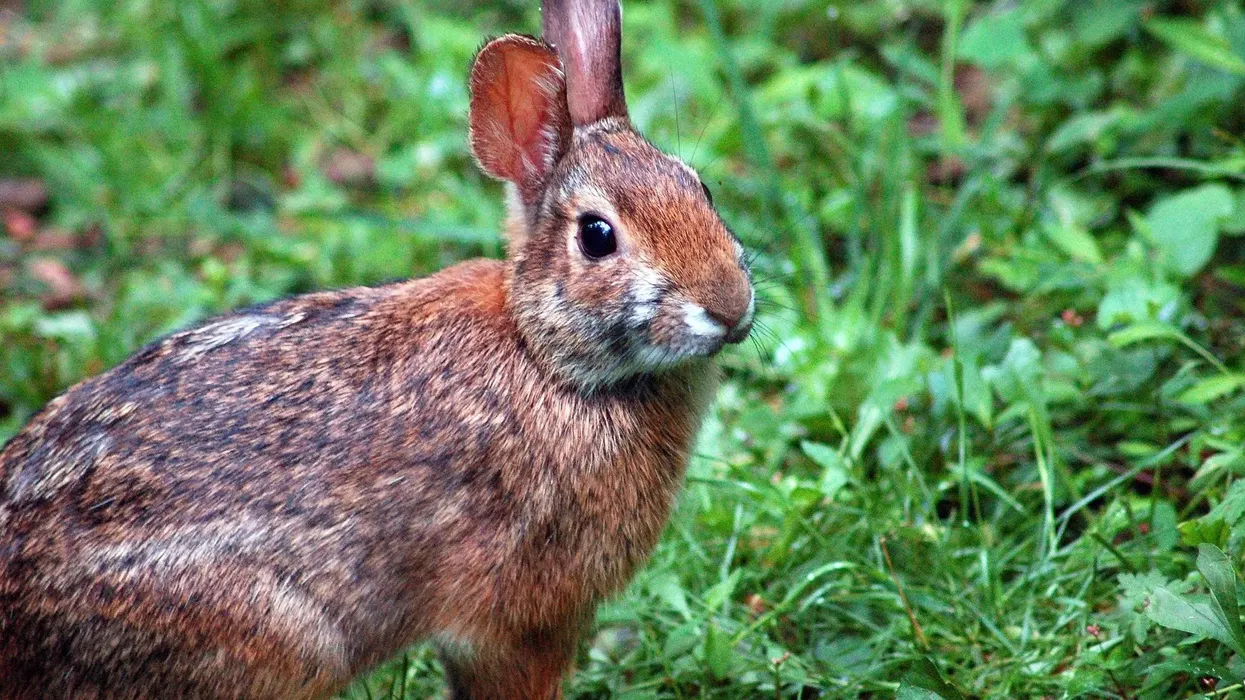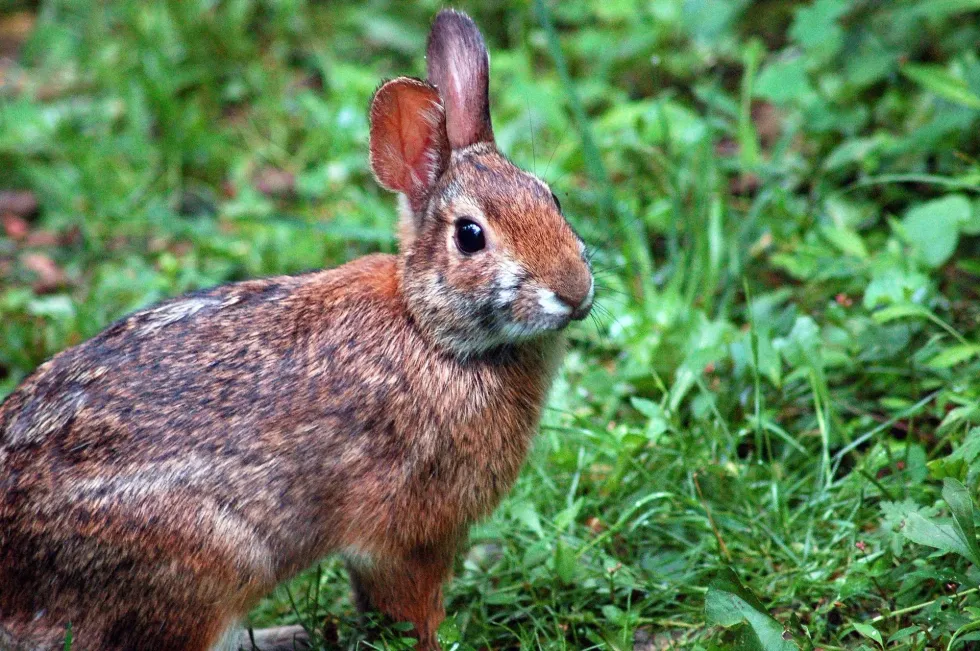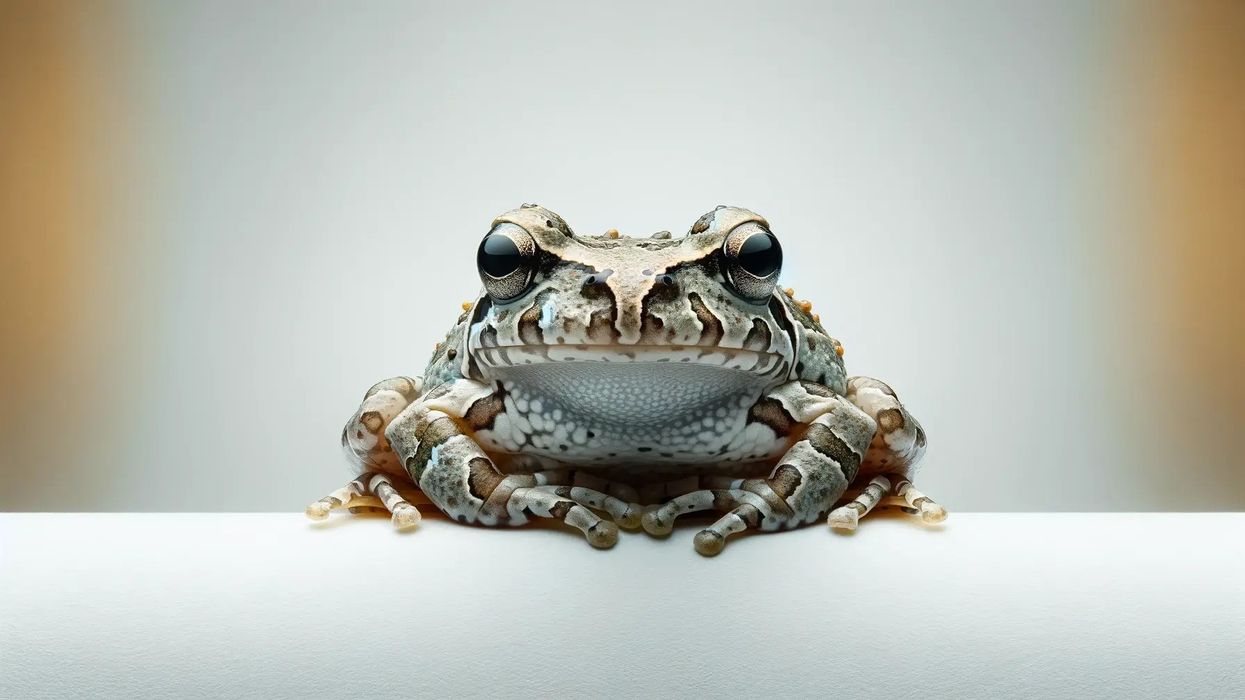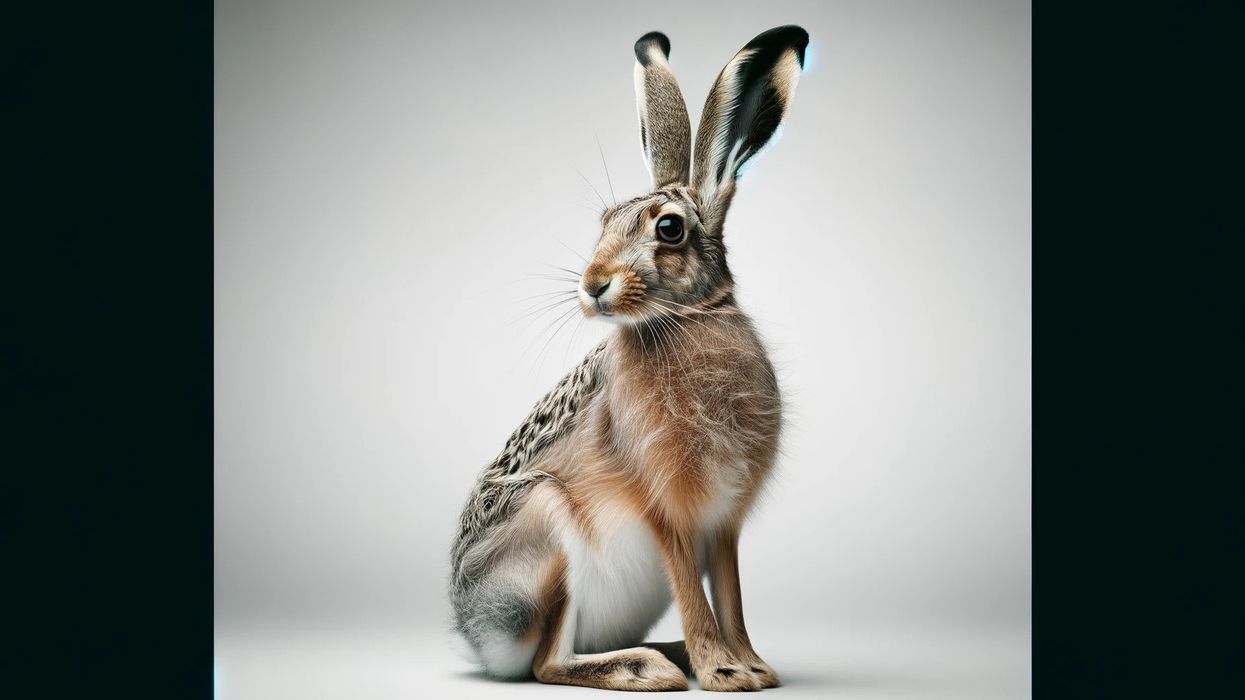The (Sylvilagus obscurus) Appalachian cottontail rabbit is a species found at higher elevations and coniferous forests with dense ericaceous vegetation in the Eastern United state ranging from places like Alabama, West Virginia to South Carolina. The Appalachian cottontail appears very similar to species like the New England cottontail.
These rabbits have light yellow-colored fur mixed with black spots and a white ventral side, and patches of brown and red.
The diet of these rabbits ranges from mountain laurel, blackberries, blueberries to the coprophagic practice of eating their own feces. This species escapes predators by hiding in logs and camouflaging, but the lack of natural resources and vegetation has put their conservation status under major threat.
These mountain rabbits don't hibernate and stay active year-round, with their reproductive season beginning in February. It is also interesting to note that they live in somewhat of a social hierarchy.
Before giving birth, the female builds a nest, and the offspring is born after 28 days.
It leaves the nest at a young age, after around four weeks. The conservation status of this mountain rabbit is Near Threatened, implying a very small population.
For more relatable content, check out these gerbil facts and black rat facts for kids.
Appalachian Cottontail Interesting Facts
What type of animal is an Appalachian cottontail?
The Appalachian cottontails are medium-sized rabbits; this population can be found in the woodlands of the Eastern United States, for example, Tennessee's eastern and central highlands. Some other types of cottontails are mountain cottontail, desert cottontail, and eastern cottontail.
What class of animal does an Appalachian cottontail belong to?
Appalachian cottontail rabbits are animals of the class Mammalia, order Lagomorpha, genus Sylvilagus, that can be found dwelling in Eastern America's mountainous habitat areas.
How many Appalachian cottontails are there in the world?
The exact number of the Appalachian cottontails is not yet known, but currently, this tiny species is classified as Near Threatened, thereby implying a small population residing at high elevations.
Where do Appalachian cottontails live?
The Appalachian cottontail, Sylvilagus obscurus, is a tiny rabbit that can predominantly be found inhabiting hilly areas of the Eastern United States, from Pennsylvania to South Carolina, and is often sighted amongst thick ericaceous flora. Appalachian cottontails are found in habitats with thick, erect stem growth that allows them to move about freely.
The Appalachian cottontail rabbit favors areas where there is a mix of woody vegetation and open terrain.
What is an Appalachian cottontail habitat?
Appalachian cottontails can be sighted throughout a wide range of Eastern US, from mountain regions to the Hudson River in New York, southward through Pennsylvania, Maryland, West Virginia, and into northeastern South Carolina, northern Georgia, and Alabama in the Appalachian Mountains.
Who does an Appalachian cottontail live with?
Normally, Appalachian cottontails are found living in solitary environments. Appalachian cottontails are found to live in structured social hierarchies, particularly in regards to mating, where the males display their authority by competing for mating precedence. This hierarchical dominance and mating is the only observed social construct of the species.
How long does an Appalachian cottontail live?
The Appalachian cottontail population has a limited life span, less than a year in certain circumstances. The species begins breeding at a very young age, with the season beginning in February. Their population and lifespan are under threat due to a lack of vegetation and forest land.
How do they reproduce?
Although there is little information on the reproductive methodology of Appalachian cottontails, we may deduce that they are polygynous based on other members of the genus. It has been observed that the species lives in social hierarchies, particularly when it comes to mating when males display their authority by competing for mating priority.
Showcasing dominance for mating priority starts in the breeding season. During sexual activity, Appalachian cottontails may squeal.
Due to longer daylight and warmer temperatures, male Appalachian cottontails become ready for breeding towards the end of the winter. The breeding season begins in late February or in early October when the weather is warm. An adult female can breed three to four times per season and have three to four offspring per litter.
The female Appalachian cottontail builds a nest before giving birth to the young ones. The gestation period is somewhere around 28 days.
The young ones gain independence in about four weeks and leave the nest. These rabbits become sexually mature at a very young age as well.
What is their conservation status?
Appalachian cottontails are only found at high elevations in the Appalachian mountains, and the IUCN Red List classifies them as Near Threatened. Habitat destruction and maturation, as well as habitat fragmentation due to urban development, are all threats. Many Appalachian cottontails are mistakingly killed by hunters as well.
Appalachian Cottontail Fun Facts
What does an Appalachian cottontail look like?

Appalachian cottontails are similar in appearance to the Eastern cottontail and the New England cottontail. The Appalachian cottontails have a light-yellow fur, a brown dorsal side with black shading, and a brown and red pattern on the throat.
Sometimes a black spot can also be observed beneath the ears. Most of the ventral side is white. The forehead might have a white spot.
How cute are they?
Appalachian cottontails are definitely considered very cute, much like other species of rabbit.
How do they communicate?
Squealing has been observed as a method of communication utilized by the Appalachian cottontails while they mate. However, not much beyond that is clearly known about the other kinds of communication utilized by the Appalachian cottontail rabbit. Heightened smell, hearing, and sight are parts of its communication machinery and help them escape predators.
How big is an Appalachian cottontail?
The length of the Appalachian cottontail (Sylvilagus obscurus) can be somewhere between 15.6-18.7 in (395-477 mm). This puts the Appalachian cottontails nearly in the height range of a red fox. Sources suggest that the length of the tail of the rabbit is somewhere between 1.5-3 in (3.8-7.6 cm) and the ears are around 2.3 in (5.8 cm).
How fast can an Appalachian cottontail run?
They normally freeze at the first sign of danger and only run as the last option, although they are quick on their feet when they do run. The Appalachian cottontail rabbit can run up to speeds of 18 mph (30 km/h) for half a mile and in a zig-zag pattern to deceive predators.
How much does an Appalachian cottontail weigh?
While Appalachian cottontails are similar in appearance to Eastern Cottontails, they are considerably smaller and, when compared, are about half the weight of the latter. The (Sylvilagus obscurus) Appalachian cottontail can weigh anywhere from 1.667-2.542 lb (756-1153 g).
What are their male and female names of the species?
Male Appalachian cottontails are referred to as bucks, while female Appalachian cottontails can be referred to as does.
What would you call a baby Appalachian cottontail?
The offspring of Appalachian cottontail rabbits are referred to as kits.
What do they eat?
Sylvilagus obscurus (Appalachian cottontail) showcases a herbivore diet pattern. Leaves, blackberry vines, greenbrier, grasses, forbs, mountain laurel, bark, and twigs of trees such as red maple, aspen, and black cherry make up their diet.
Appalachian cottontails, like most Lagomorphs, practice coprophagy or the act of extracting nutrition from ingesting their own feces. This helps them absorb back the nutrients not digested in the first pass of digestion.
Are they dangerous?
The Appalachian cottontail can be dangerous to humans if provoked. These rabbits can bite and have razor-sharp teeth. Cottontail rabbits can also spread diseases to humans like rabies and tularemia, also known as rabbit fever. These diseases can be fatal for humans if immediate medical attention is not provided.
Would they make a good pet?
Like most wild animals, although cute and tempting, they should not be kept as pets. It is only in their natural habitat that they are able to thrive and live their fullest lives. Captivity by humans of any sort will just hinder these wonderful beings instead of supporting them.
Did you know...
Surprisingly, camouflage and deception are used by Appalachian cottontails to conceal their nests.
The Appalachian cottontails defecate twice and urinate blue occasionally.
Why is the Appalachian cottontail endangered?
The loss and maturation of habitat, natural resources as well as habitat fragmentation owing to urban growth are all factors that contribute to to the endangerment of the Appalachian cottontails. The lack of natural resources and wildlife resources have drastically reduced this species' ability to escape predators and give birth.
After fragmentation, the cottontail is left without shelter and camouflage, leaving it exposed to predators and putting the species under more stress. There are several hunters who kill this Near Threatened species, further adding to its endangered status.
Do cottontail rabbits come out at night?
According to all sources, Appalachian cottontails are crepuscular animals, meaning they are active largely during the evening hours. Most rabbit species display this behavior, which differs from diurnal and nocturnal activity, in which an animal is active during daylight and night, respectively.
Here at Kidadl, we have carefully created lots of interesting family-friendly animal facts for everyone to discover! Learn more about some more mammals from our gopher facts and hoary marmot facts pages.
You can even occupy yourself at home by coloring in one of our free printable Appalachain cottontail coloring pages.








